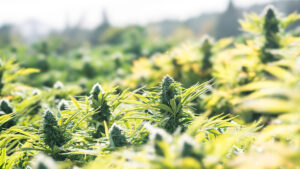
Introduction:
In recent years, the cultivation of cannabis has gained widespread acceptance, with more individuals opting to grow their own plants. While indoor cultivation has its merits, outdoor growing offers a range of benefits, including ample space, natural sunlight, and reduced energy costs. Whether you’re a seasoned cultivator or a novice enthusiast, this guide will provide you with essential tips and techniques to successfully grow cannabis outdoors while adhering to legal regulations.
Understanding Legal Considerations:

Before embarking on your outdoor cannabis growing journey, it’s crucial to familiarize yourself with the legal regulations in your region. Laws pertaining to cannabis cultivation vary widely, with restrictions on the number of plants, permissible locations, and licensing requirements. Ensure compliance with local ordinances and regulations to avoid legal complications and penalties.
Selecting the Ideal Location:
Choosing the right location is paramount to the success of your outdoor cannabis garden. Opt for a site that receives ample sunlight, preferably six to eight hours of direct sunlight per day. Additionally, ensure proper drainage to prevent waterlogging and root rot. Consider factors such as privacy, security, and accessibility when selecting your garden site to minimize potential disruptions and maximize plant growth.
Preparing the Soil:
Healthy soil is the foundation of a thriving cannabis garden. Conduct a soil test to assess its pH levels and nutrient composition. Cannabis plants thrive in slightly acidic soil with a pH range of 6.0 to 7.0. Amend the soil as needed by incorporating organic matter such as compost, aged manure, or worm castings to improve fertility and structure. Avoid using chemical fertilizers and pesticides, as they can harm beneficial microorganisms and compromise plant health.
Choosing the Right Cannabis Strain:
Selecting the appropriate cannabis strain is essential to achieve your desired effects and yields. Consider factors such as climate, growing conditions, and personal preferences when choosing a strain. Indica-dominant strains are well-suited for cooler climates and shorter growing seasons, while sativa-dominant strains thrive in warmer environments with longer days. Hybrid strains offer a balance of both indica and sativa characteristics, providing versatility and adaptability to varying conditions.
Germinating Seeds or Propagating Cuttings:
Once you’ve selected your desired strain, it’s time to germinate seeds or propagate cuttings to start your cannabis garden. Germinate seeds by placing them between moist paper towels or in a seedling tray with a light soil mix. Keep the seeds warm and moist until they sprout, then transplant them into individual containers or directly into the ground. Alternatively, propagate cuttings from a healthy mother plant by taking stem cuttings and rooting them in a rooting hormone solution before transplanting them into the soil.
Transplanting Seedlings:
Transplant seedlings into their final growing containers or outdoor garden beds once they’ve developed a robust root system and established themselves. Ensure adequate spacing between plants to allow for proper airflow and prevent overcrowding. Water the seedlings thoroughly after transplanting to help them acclimate to their new environment and promote healthy growth.
Implementing Pest and Disease Management Strategies:
Preventative measures are key to protecting your outdoor cannabis garden from pests and diseases. Inspect plants regularly for signs of pests such as aphids, spider mites, and caterpillars, and promptly address any infestations using organic pest control methods such as neem oil, insecticidal soap, or beneficial insects. Practice good sanitation by removing fallen leaves and debris to minimize the risk of disease transmission and fungal infections.
Maintaining Proper Watering and Nutrient Levels:
Consistent watering and nutrient management are essential for the health and vitality of your outdoor cannabis plants. Water plants deeply and infrequently to encourage deep root growth and drought tolerance. Monitor soil moisture levels and adjust watering frequency based on environmental conditions and plant needs. Supplement soil nutrients as needed using organic fertilizers such as compost tea, fish emulsion, or seaweed extract to promote robust growth and flowering.
Practicing LST (Low-Stress Training) Techniques:
Low-stress training (LST) techniques involve gently bending and securing branches to manipulate the growth pattern of cannabis plants and optimize light penetration and airflow. Use soft ties or gardening wire to gently bend branches and train them to grow horizontally, creating an even canopy and maximizing bud production. LST techniques can also help reduce the overall height of plants and increase yields in limited vertical spaces.
Monitoring Flowering and Harvesting:
As outdoor cannabis plants enter the flowering stage, monitor them closely for signs of maturity and readiness for harvest. Look for changes in bud development, resin production, and trichome coloration to determine the optimal time for harvesting. Harvest plants gradually, starting with the topmost buds and working your way down to ensure even ripeness and potency. Trim harvested buds carefully to remove excess foliage and prepare them for drying and curing.
Conclusion:
Growing cannabis outdoors can be a rewarding and fulfilling experience, allowing you to connect with nature while producing high-quality buds for personal use. By following the guidelines outlined in this comprehensive guide, you can cultivate healthy, vibrant cannabis plants while maximizing yields and potency. Remember to prioritize compliance with legal regulations, practice sustainable cultivation methods, and stay vigilant against pests and diseases to ensure the success of your outdoor cannabis garden. Happy growing!
